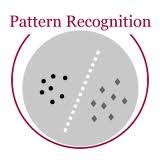Although interventional studies demonstrate that preventing malaria during pregnancy can reduce the low birth weight (i.e., child's birth weight $<$ 2,500 grams) rate, it remains unknown whether natural changes in parasite transmission and malaria burden can improve birth outcomes. We conduct an observational study of the effect of changing malaria burden on low birth weight using data from 18,112 births in 19 countries in sub-Saharan African countries during the years 2000--2015. A malaria prevalence decline from a high rate (Plasmodium falciparum parasite rate in children aged 2-up-to-10 (i.e., $Pf\text{PR}_{2-10}$) $>$ 0.4) to a low rate ($Pf\text{PR}_{2-10}$ $<$ 0.2) is estimated to reduce the rate of low birth weight by 1.48 percentage points (95% confidence interval: 3.70 percentage points reduction, 0.74 percentage points increase), which is a 17% reduction in the low birth weight rate compared to the average (8.6%) in our study population with observed birth weight records (1.48/8.6 $\approx$ 17%). When focusing on first pregnancies, a decline in malaria prevalence from high to low is estimated to have a greater impact on the low birth weight rate than for all births: 3.73 percentage points (95% confidence interval: 9.11 percentage points reduction, 1.64 percentage points increase). Although the confidence intervals cannot rule out the possibility of no effect at the 95% confidence level, the concurrence between our primary analysis, secondary analyses, and sensitivity analyses, and the magnitude of the effect size, contribute to the weight of the evidence suggesting that declining malaria burden has an important effect on birth weight at the population level. The novel statistical methodology developed in this article, a pair-of-pairs approach to a difference-in-differences study, could be useful for many settings in which the units observed are different at different times.
翻译:虽然干预研究表明,预防妊娠期疟疾可以降低低出生体重率(即儿童出生体重 < 2 500 克),但尚不清楚寄生虫传播和疟疾负担的自然变化能否改善出生结果。我们利用撒哈拉以南非洲19个国家2000-2015年期间18 112例出生的数据,对疟疾对低出生体重的影响进行观察研究。疟疾流行率从高发率下降(2至10岁儿童出生体重的恶性疟原虫寄生虫发病率(即出生体重 < 2 500 克)可降低95-64(即出生体重 < $Pf\ text{PR2-10 美元)),而寄生虫传播和疟疾负担的自然变化幅度大于0.4美元。 估计低出生体重比率下降1.48个百分点(信心期间:减少3.70个百分点,增加0.74个百分点),与出生体重的平均比率(8.6美元)相比,降低出生体重的平均比率下降17%(比例为1.873美元),而生育体重的间隔期分析显示,降低比例为995个百分点(比率分析显示,降低比率为0.5个百分点)。



